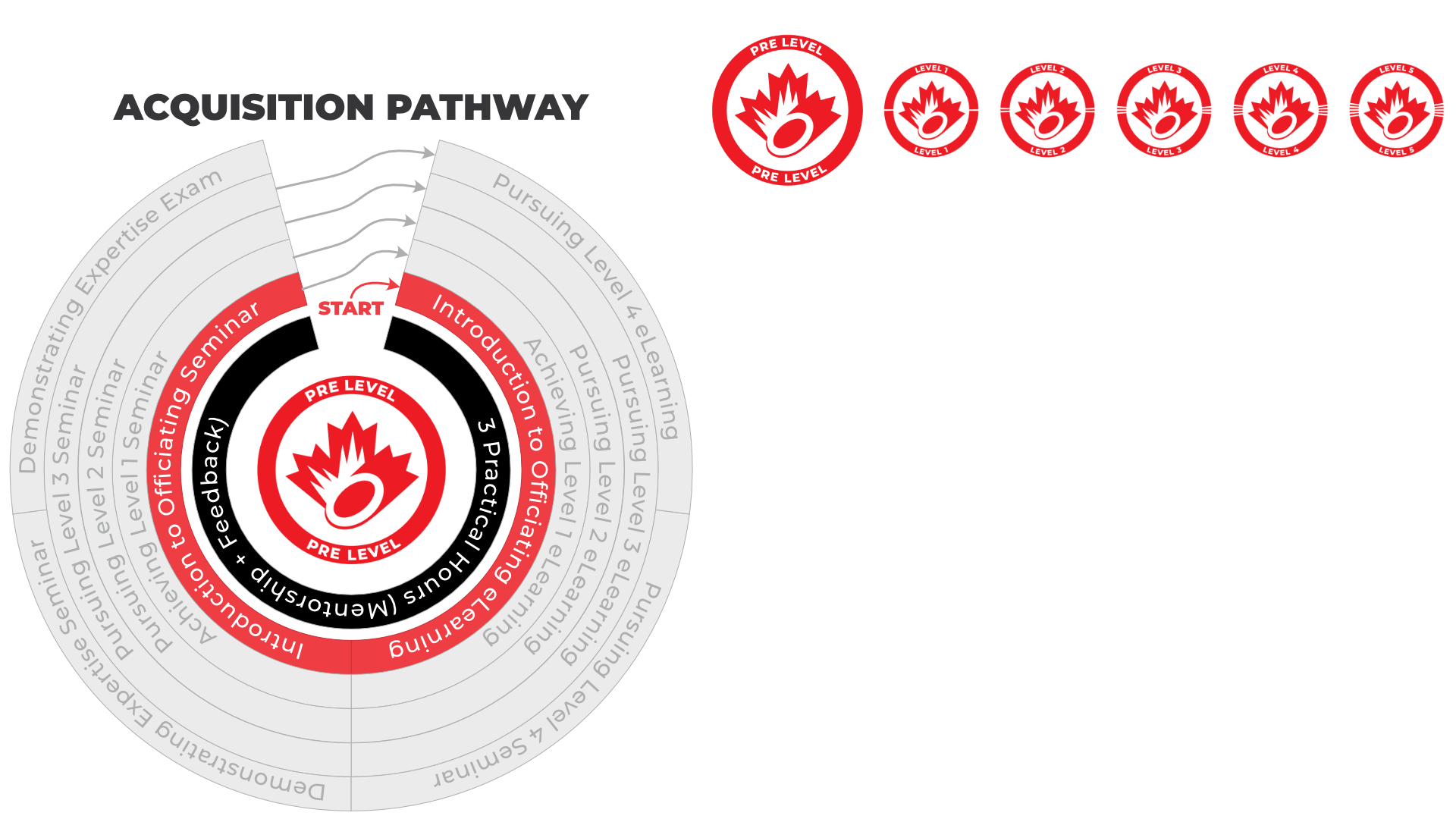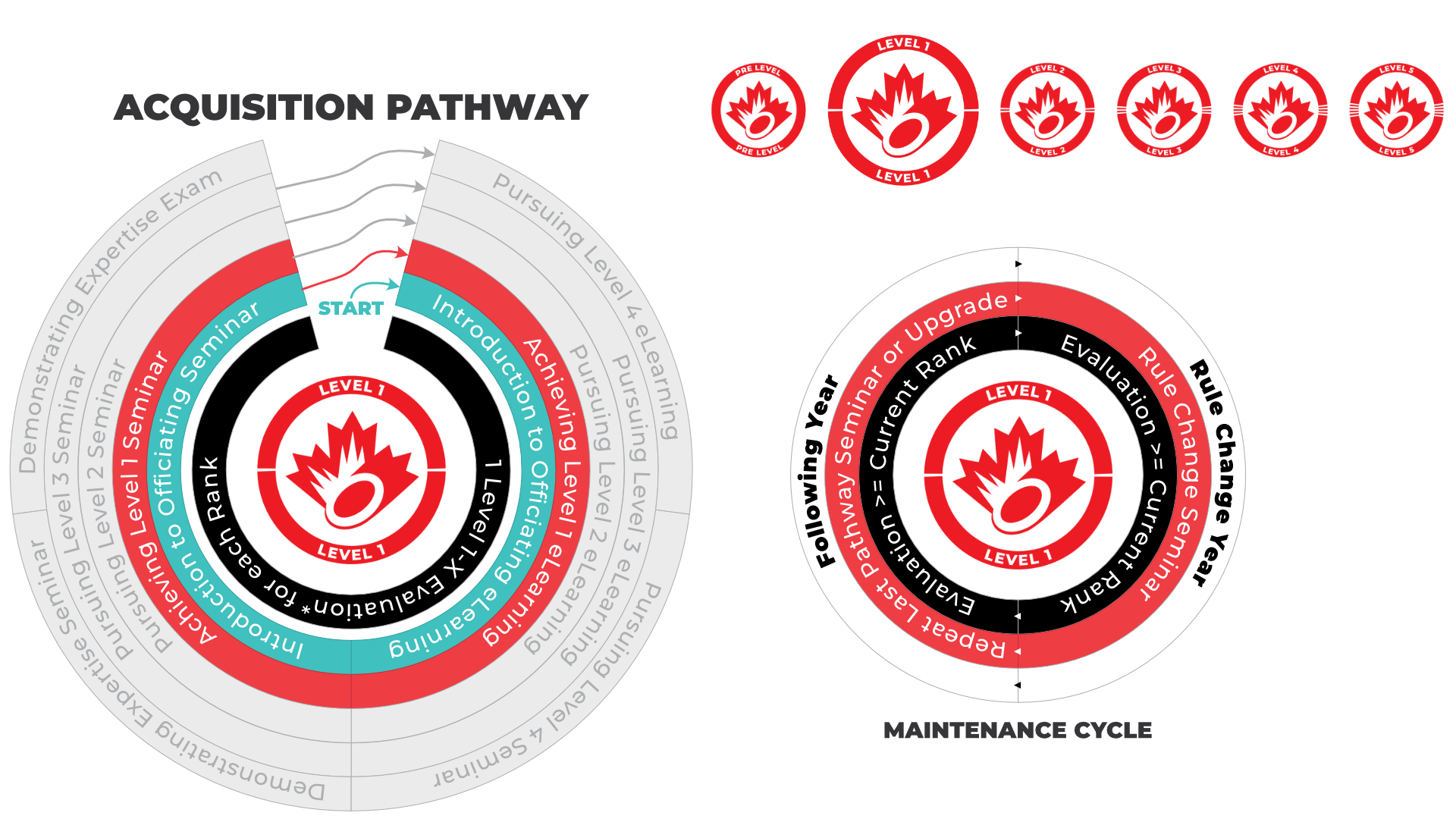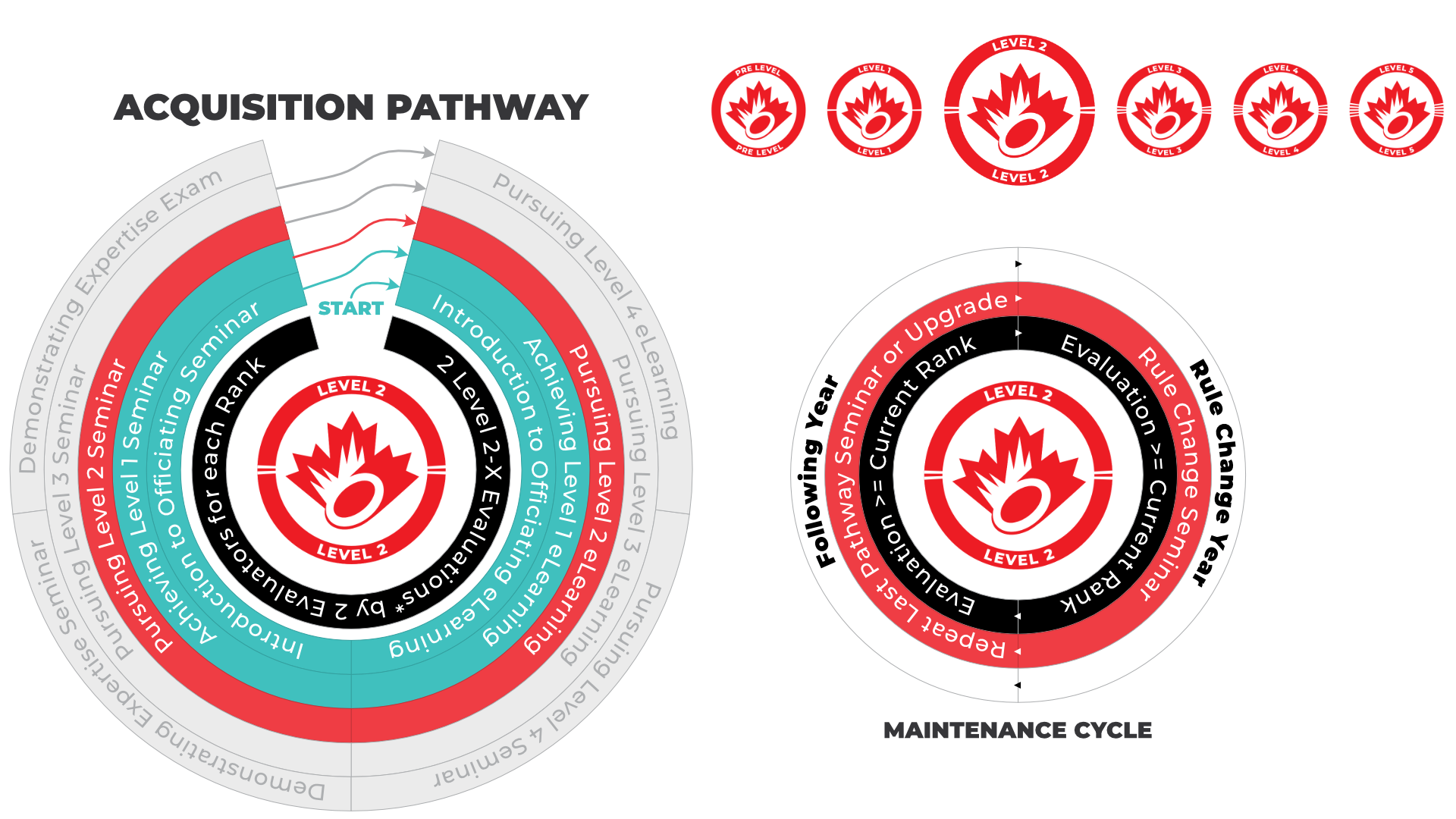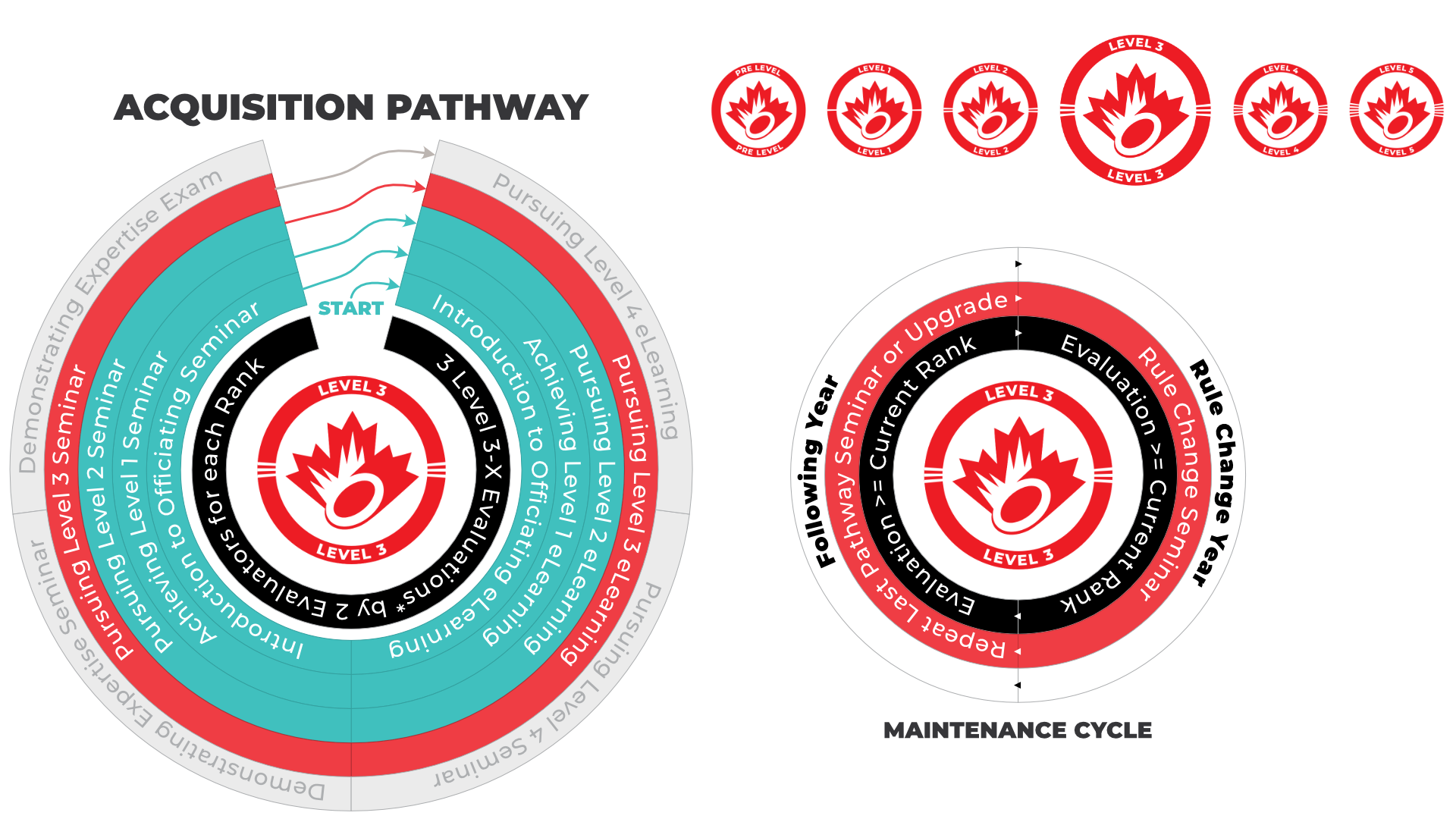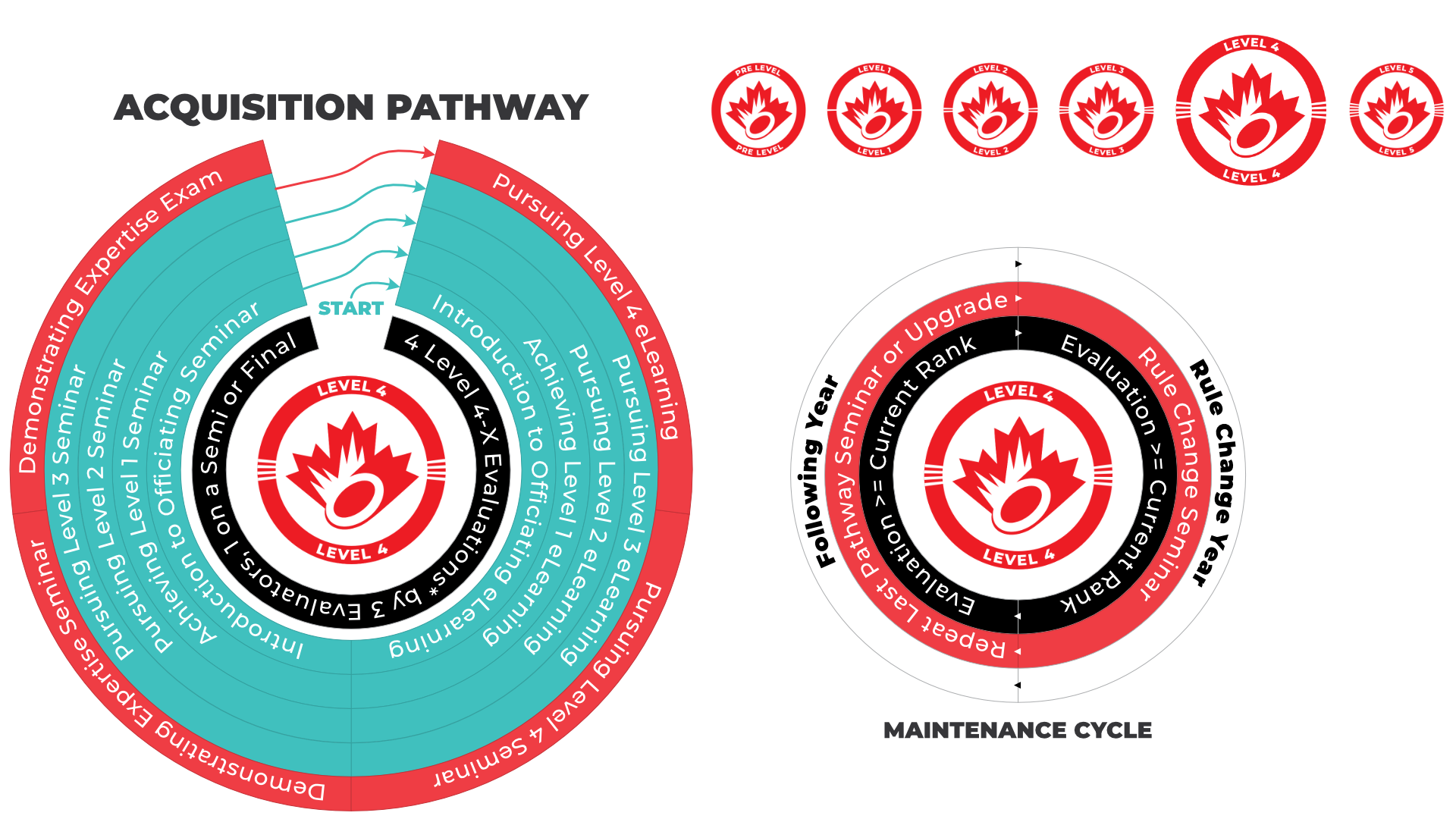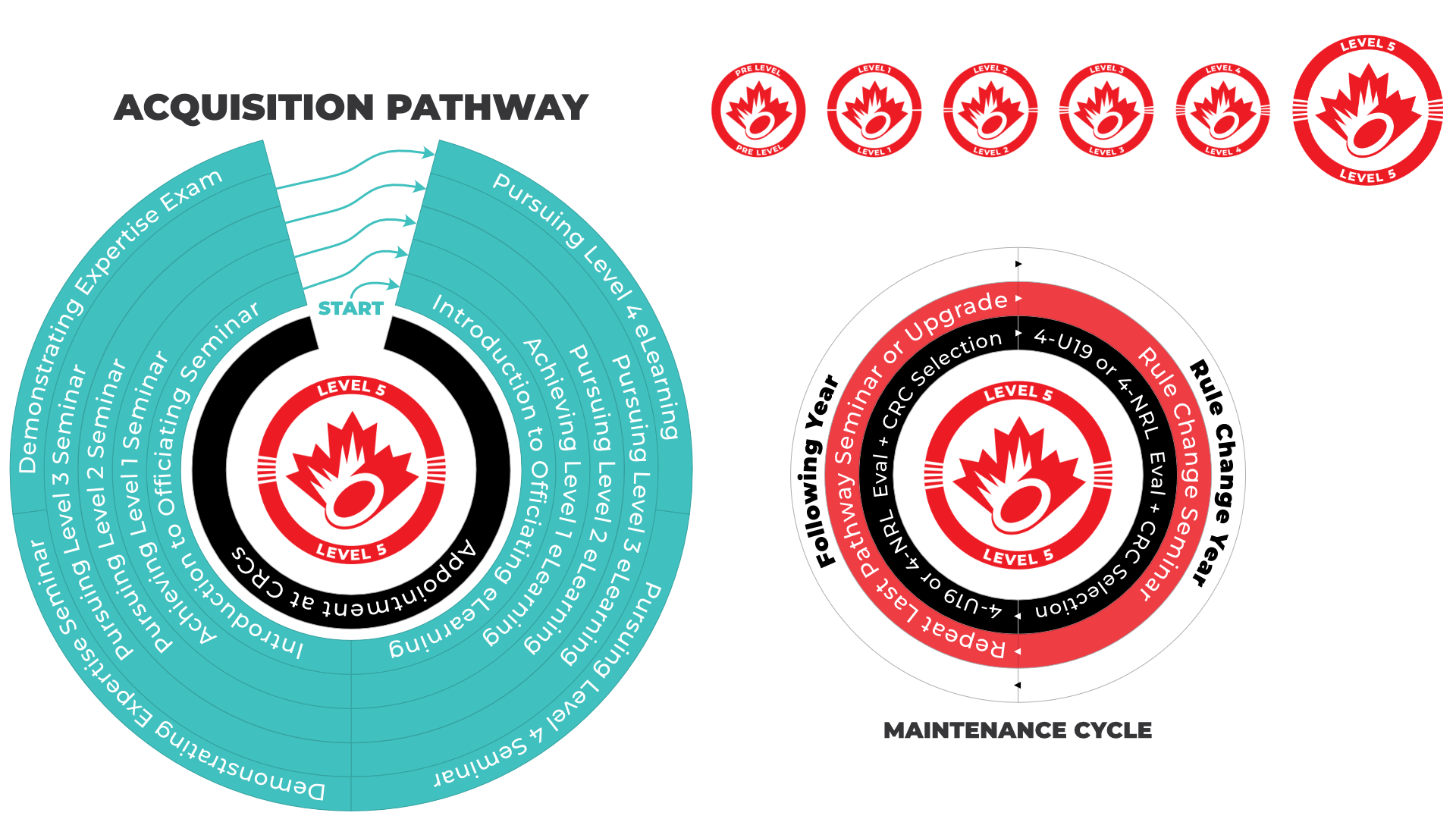On-ice Official Pathways
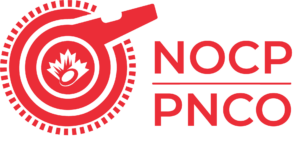
On this page: On-Ice Official LTOD | On-ice Official Ranks | Retirement Ranks | Learning Pathways
Points of Interest: Rank Upgrade Table | Rank Maintenance Table | Learning Pathway Diagrams
On-ice Official Pathways
The On-ice Official Pathways are robust and consist of two separate, loosely coupled streams: the Learning and Evaluation Pathways. The Learning Pathways teach officials the fundamental skills required at each officiating level. The Evaluation Pathway tests each Official's performance against expected standards and ultimately determines an Official's rank. Performance in the evaluation pathway does not restrict progression through the learning pathways. However, an official cannot progress in their officiating rank without success in both the learning and evaluation pathways.
The On-ice Official LTOD Matrix connects these two streams.
On-ice Official LTOD
The On-ice Official LTOD matrix is a document that defines the expectations and differences between each officiating Level. These expectations help to define what is taught in each Learning Pathway and how an On-ice Official's performance is assessed during an Evaluation.
The On-ice Official LTOD matrix can be found here:
On-ice Official Ranks
Once an on-ice official completes the Introduction to Officiating Pathway, they are certified to officiate any Ringette game at any level. However, they are not yet assigned a rank.
All other On-ice Officials are classified by rank. Officials are ranked to:
- Understand where they are in the progression of Learning Pathways and the expectations set by the On-Ice Official LTOD Matrix.
- Establish the level of Ringette game where they are most likely to succeed.
On-ice Official ranks are constructed from LTOD Levels (1-5), each corresponding to a game calibre (1=C, 2=B, and so on) and an age division. They are represented in the form of 1-U14.
The following table identifies the On-ice Official ranks. The intersection of Level and age division indicates the ideal game level for an official at the given rank. The teal-highlighted section of the table indicates the game levels at which an official with the given rank is particularly suited to success. The section highlighted in red represents the game levels that will provide achievable challenges that will encourage the official to improve.
Level 5 is not demonstrated in the table below. For illustration, it can be considered the same as 4-NRL/LNR.
| 1 | U12C | U14C | U16C | U19C | 18+ C | |
| 2 | U12B | U14B | U16B | U19B | 18+ B | |
| 3 | U12A | U14A | U16A | U19A | 18+ A | |
| 4 | U14AA | U16AA | U19AA | NRL/LNR | ||
| Level(Niveau) /Age Division | U12 | U14 | U16 | U19 | 18+ | NRL/LNR |
|---|---|---|---|---|---|---|
Promotional Upgrades
On-ice Officials achieve promotion through a combination of evaluations and completion of learning pathways. Here, the rule of thumb is that for each rank they pursue, they must achieve 1 - 4 evaluations (depending on and equivalent to the Level component of the rank - i.e. 3 evaluations for 3-U14). Those evaluations must be at or above the rank they are pursuing*.
*Evaluations do not get "used up" when applied to achieving a new rank. For example, if an official earns one 3-U14 and two 3-U16s, they will be considered a 3-U14. They need only to earn one more 3-U16 or higher to achieve a 3-U16 rank.
Navigate the Rank Upgrade table below to discover the requirements for each rank.
Other important details:
- In general, when more than one evaluation is required, those evaluations must come from two different evaluators.
- Level 4 evaluations require at least one evaluation on a Final or Semi-final game (for each level except NRL).
*Complete details of upgrade procedures can be found in the NOCP Operations Manual.
Rank Upgrade Table
| 1 | Achieving Level 1 | 1-U12 | 1-U14 | 1-U16 | 1-U19 | 1-18+ | |
| 2 | Pursuing Level 2 | 2-U12 | 2-U14 | 2-U16 | 2-U19 | 2-18+ | |
| 3 | Pursuing Level 3 | 3-U12 | 3-U14 | 3-U16 | 3-U19 | 3-18+ | |
| 4 | Pursuing Level 4 + Demonstrating Expertise | 4-U14 | 4-U16 | 4-U19 | 4-NRL/LNR | ||
| Learning Pathway | U12 | U14 | U16 | U19 | 18+ | NRL/LNR | |
|---|---|---|---|---|---|---|---|
Maintaining Rank
On-ice Officials must maintain their rank every year by December 15; otherwise, they may be dowgraded. To maintain their rank, they must achieve one evaluation at or above their current rank and complete any required training. Achieving an upgrade within the maintenance window fulfills the maintenance requirement.
In rule change years, On-ice Officials must train on the new rules and complete a Professional Development seminar. In opposite years, On-ice Officials must repeat the seminar for their current Learning Pathway or begin an upgrade path and complete the next one.
The Rank Maintenance Table below indicates the Recommended Ranks that can be earned to achieve maintenance for the Officiating Rank you hover over.
Rank Maintenance Table
*Note: The highlights below are correct @ Level 1. If an On-ice Official achieves one evaluation at a higher age division than their current Rank, they would be upgraded.
| 1 | Rule Change & PD or; Learning Pathway | 1-U12 | 1-U14 | 1-U16 | 1-U19 | 1-18+ | |
| 2 | Rule Change & PD or; Learning Pathway | 2-U12 | 2-U14 | 2-U16 | 2-U19 | 2-18+ | |
| 3 | Rule Change & PD or; Learning Pathway | 3-U12 | 3-U14 | 3-U16 | 3-U19 | 3-18+ | |
| 4 | Rule Change & PD or; Learning Pathway | 4-U14 | 4-U16 | 4-U19 | 4-NRL/LNR | ||
| Maintenance Training | U12 | U14 | U16 | U19 | 18+ | NRL/LNR | |
|---|---|---|---|---|---|---|---|
Downgrades
On-ice Officials may be reclassified to a lower rank when they are not able to meet the requirements of rank maintenance or if they receive several consecutive evaluations to lower ranks.
Full details of downgrade paths and implications can be found in the NOCP Operations Manual.
Retirement Ranks
Retirement Ranks provide a respectful way for On-Ice Officials to continue officiating but step back from competition while being recognized for their achievements. These ranks encourage continued involvement and retention of experienced On-Ice Officials.
Eligibility and Identification:
- Available for On-Ice Officials at Levels 3 to 5, represented as 3R, 4R, and 5R.
- Officials must declare their intent to withdraw from competition.
Maintenance and Learning Requirements:
- Officials with a Retirement Rank are not required to participate in Learning Pathway Upgrade or Refresh cycles but must complete rule change and professional development cycles every two years.
- Annual maintenance evaluations are not required, but officials can request evaluations, which should occur at least once every three years.
Selection:
- Retirement Officials can be considered for event selection if specifically invited, but priority is given to others first.
This system ensures that experienced officials remain valued and involved in the officiating program.
For complete details on Retirement ranks, view the policy here: https://docs.google.com/document/d/1NOtDYlzWPo2yfnH86FtApUrmIxDOpQ0DXyZT7N8CFbw/edit?usp=sharing
To self-identify for a Retirement Rank, use the form located here: https://docs.google.com/forms/d/e/1FAIpQLSeXLCFKoJo0_a1vn66tEwtJ4y9yMVKXmpXBf2SpyX-pHHXcIg/viewform?usp=sf_link
Learning Pathways
* Note: the learning pathways are in development. Pending their completion and roll-out, Ringette Canada has developed bridging clinics that deliver updated learning consistent with the new LTOD matrix. These clinics are longer in duration (8 hours) and must be delivered face-to-face (in person or online). See below for the proposed learning schedule.
The NOCP training model of “clinics” has changed to “Pathways.” Pathways consist of multiple training modes that combine to ensure that we teach the fundamental skills documented in the LTOD matrix at each Level.
The Pathways may consist of:
- Self-directed eLearning
- Manual documentation
- Testing
- Face-to-face seminars (in person or online)
- Practical training
There are six learning pathways in the On-ice Official pillar:
- Introduction to Officiating (entry point for new officials)
- Achieving Level 1 (for officials working on their Level 1)
- Pursuing Level 2 (for officials who have completed Achieving Level 1)
- Pursuing Level 3 (for officials who have completed Pursuing Level 2)
- Pursuing Level 4 (for officials who have completed Pursuing Level 3)
- Demonstrating Expertise (for officials who have completed Pursuing Level 4 and are prepared to prove that they have the rules knowledge required to be a Level 4 On-ice Official or Level 4 Evaluator)
Rule Changes, Maintenance, and Upgrades
Rule Change Years
In rule change years, regardless of position in the pathways or current rank (including Retirement Ranks), officials must complete Rule Change and Professional development learning.
Rule Change and Professional development learning may include:
- eLearning delivered by Ringette Canada
- Face-to-face seminar delivered by Provinces
Non-Rule Change Years
In non-rule change years, officials are expected to either:
- Upgrade via their next pathway seminar (if they meet the pre-requisites - i.e. complete the eLearning)
- Refresh by repeating their current pathway seminar
Schedule
2025
- Introduction to Officiating for New Officials
- Achieving Level 1 Training
- Rule Change & Professional Development for All On-ice Officials
2026:
- Introduction to Officiating for New Officials
- Achieving Level 1 Training
- Level 2 Upgrade Clinic (for Level 1 Officials)
- Level 3 Upgrade Clinic (for Level 2 Officials)
- Level 4 Upgrade Clinic (for Level 3 Officials)
Acquisition Pathways
The diagrams below illustrate the On-Ice Official Pathways. The diagrams begin with the On-ice Official NOCP rings which illustrate the relationship and flows of the Learning Pathways, while also illustrating the requirements for Officiating developers (Evaluators and Instructor Facilitators), and the level of play expected for each officiating level.
The following rings illustrate the progression of Learning Pathways and Evaluation and that result in movement within the officiating levels. The smaller, companion rings, illustrate the maintenance requirements at each Level.
